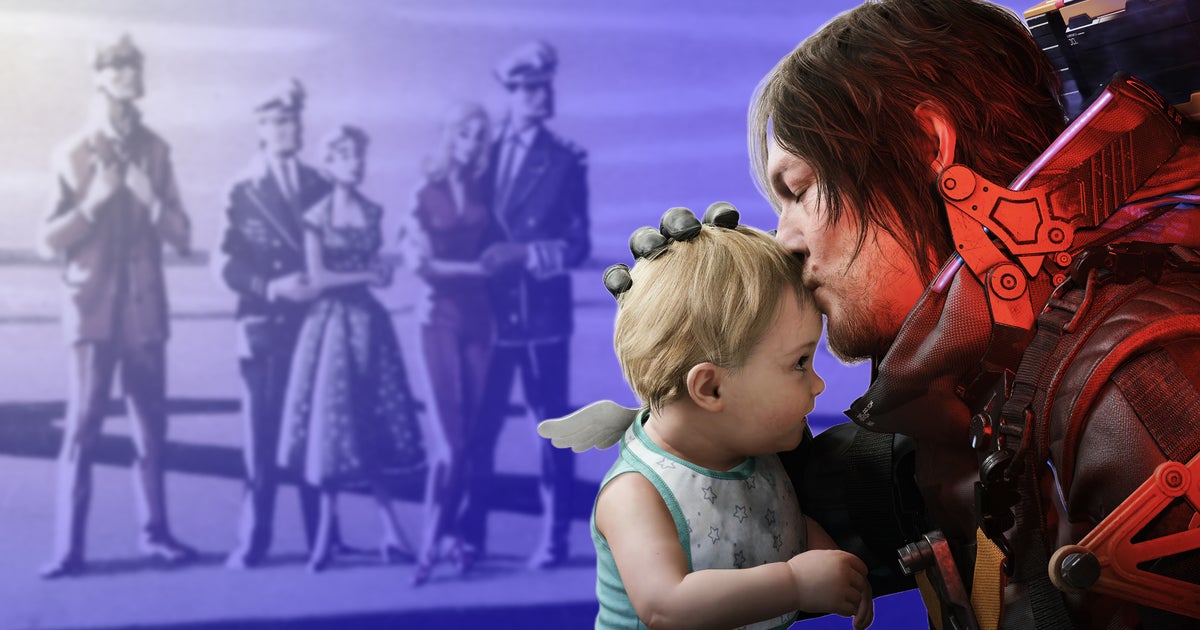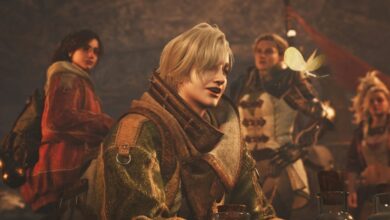Death Stranding 2’s most important reference isn’t a movie, it’s a really depressing novel

Be warned: This piece contains spoilers for Death Stranding 2: On the Beach.
A sad irony pervades Death Stranding and its sequel: each world is achingly pretty yet hardly anyone, except for stoic courier Sam Porter Bridges (and a bunch of paramilitary goons) is actually above ground to enjoy the view. In the first game, Sam hikes through a pristine, post-catastrophe U.S. It is covered in soaking-wet moss and rivers gushing as you imagine they might have at the dawn of time. The Australia of Death Stranding 2 is similarly glorious, a land of Mars-red rock formations stippled with salmon sunsets and daubs of vivid-green new growth. You can direct Sam to rest, at which point he loosens the straps of his heavy pack, exhaling with relief. For a fleeting moment, he’s able to soak up the splendour before him
This beautiful yet eerily absent version of Australia has a parallel: that found in Nevil Shute’s 1957 novel, On The Beach, with which the game shares its title. Writer-director Hiideo Kojima is a confirmed fan of both the book and its 1959 movie adaptation, starring Gregory Peck and Ava Gardner. The joint title indicates more than the kind of affectionate homage Kojima has become renowned for. Both game and book are set in Australia; both prominently feature submarines; both convey an acute fear about extinction events; both centre on the fate of children. Most importantly, I think, each is a work of fiction about attempting to forge connections with the last, siloed people in a world that has become, to a large degree, completely inhospitable, yet which has lost none of its eye-widening luster.
In Shute’s novel, planet Earth has suffered a cataclysmic nuclear war at the hands of a conflict between Russia and China. The few places that emerged unscathed – Uruguay, South Africa, and Australia – don’t have long left, six months by the scientists’ best estimates. A vast shimmering cloud of deadly radiation is making its way from the northern hemisphere, where the conflict primarily took place, to the south, carried along on a gigantic, slow-moving breeze. We follow a group of justifiably pissed-off Melburnians who await their slow, horrible death from radiation poisoning in various ways. Some party, others tend to their gardens. With all of their deaths, the last major outpost of humanity will fall silent.
The novel’s great, gut-wrenching power stems from the creeping sense of inevitability of this terrible moment. But we only really come to appreciate its totality some two-thirds of the way through. Before that, there is the faintest glimmer of hope. A series of messages are detected from somewhere on the western coast of the United States. What remains of the world’s naval forces, headed up by the loyal, soft-spoken American, Dwight Towers, heads out to investigate, dodging oceans littered with submerged mines while barely surfacing for air, such are the fatal radiation levels above water. They’re able to make out a few words amid otherwise garbled code. One of these is “WATERS”. The other is “CONNECT.”
Death Stranding 2 is clearly in dialogue with the novel. Born in 1963, Kojima, like Shute’s book, is the product of a paranoid Cold War era in which the threat of nuclear armageddon was ever-present. The Metal Gear games famously grapple with the subject, even letting players build a nuke in the fifth installment – a comment on the dunderheaded escalatory attitude of modern, fear-mongering politicians. The fiction of Death Stranding talks more broadly of extinction events but the imagery is pure 20th-century nuclear anxiety. The most fearsome events in these games are voidouts, essentially mini-nuclear explosions that level entire cities, leaving nothing but a supersized crater. Death imprinted on the planet’s outer layer as a kind of nuclear sublime.

But even at their grimmest and most desolate (and goodness knows there are many such moments in the sequel!), the Death Stranding games remain hopeful. In the original, this hope is embodied in the strange incubated infant, BB (or Lou as she comes to be known) for whom, with every step forward, delivery made, and piece of infrastructure laid down, Sam is working to build a better future. In Death Stranding 2, the personification of hope – really, Sam’s reason to live – shifts. It is there in the resilient wildlife which, against all odds, defies annihilation. Our hero also finds hope in the community of people whom, with a little help from Fragile, he enjoys physical refuge with on the metaphysical submarine, the DHV Magellan.
Shute’s novel plays with ideas of connection beyond the naval mission attempting to find the source of that tantalising San Diego transmission. Towers, the submarine’s captain, has family waiting for him in Mystic, Connecticut: a wife, Sharon, and a son and a daughter. As the days count down to the arrival of the radiation, he spends much of his remaining time tracking down a pogo stick and fishing rod for his children, despite knowing full well they are likely dead. In spite of this, Towers seems to feel bound to his loved ones, even across the great beyond.
Kojima summons a similar sentiment throughout Death Stranding 2, albeit opting, in his own way, to spell the subtext out. “Death can’t tear us apart. We’ll always be connected,” says Fragile. “You will never, ever be alone.”


But where Kojima derives comfort from these proclamations, the longing of Shute’s characters for metaphysical, spiritual connection only emphasizes the tragedy of their situation. One profoundly awful scene involves a different naval officer, Peter Holmes, committing suicide at home with his wife and their small child. In the pages prior to the moment, his family is shown vomiting and suffering from diarrhoea. The small child is so debilitated that it has withered and lost even the will to cry.
The difference in emotional thrust between the endings of these two On The Beach works is pronounced. In the face of nuclear apocalypse, Shute opts for oblivion; without giving Death Stranding 2’s ending away, Kojima’s nuclear-coded apocalypse is neat, tidy, and comparatively cozy. There is, I think, something telling in the gap between these oppositional visions of extinction events. In the intervening decades between Shute’s upsetting novel and Kojima’s cutting-edge video game, visions of post-nuclear life seeped into popular consciousness. Images of this new A.D. (after detonation) became familiar and normalised, all as the threat of nuclear war appeared to dissipate. Kojima’s famously anti-nuclear Metal Gear games of the 1990s and 2000s are part of this post-nuclear mainstreaming (after all, its death-dealing mechs look a lot like children’s toys). The Mad Max movies of George Miller, who stars as Tarman in Death Stranding 2, have left their own mark: Max (like Sam!) cavorts in cartoon-like fashion about the Australian outback on hulking vehicles: he maintains perfectly styled hair, white teeth, and the strength to wield souped-up machinery.
Kojima and Miller’s work does not lack impact, but their treatment of these concerns are less sober than Shute’s, which is perhaps to be expected as a result of their relative distance from the horrors of World War 2 and the dropping of the atomic bomb on Japan.

For Shute, the blighted future was a shadowland to interrogate despair. For Kojima, it is a playground to exercise his – and the player’s – semantic, speculative imagination. Indeed, the writer-director’s apparent capacity to prophesise through his work has long been praised. Metal Gear Solid 2: Sons of Liberty is heralded as a harbinger of our information-overloaded post-truth times. The fiction of the original Death Stranding, released in November 2019, turned into reality just a few months later during the Covid-19 pandemic. Most of us were legally mandated to lock ourselves away: the only connections available to the outside world were either the internet or the delivery people who laboured under life-threatening conditions.
Death Stranding 2 is in tune with the anxieties of our current moment: the corrosion of human intimacy by digital proxies, and the emergence of technologies that render our own labour obsolete. Yet, for the first time in years, elements of Kojima’s work feel a little dissonant. In the past weeks, nuclear discourse has again catapulted into the public consciousness through political rhetoric, proclamations of defence spending, and, of course, the bombing of alleged warhead-producing facilities. In light of this, Death Stranding 2’s radical optimism – which is maybe its ultimate philosophical position – feels more than misplaced: it feels irrational.


This isn’t a criticism of Death Stranding 2; the news moves fast, certainly too fast for a blockbuster video game to keep up with! Rather, it’s an observation about nuclear disaster in the cultural imagination. On The Beach and its video game counterpart are separated by 68 years: one offers cosmic despair; the other offers cosmic hope. Shute was writing when the burned and bloodied victims of Hiroshima were relatively fresh in people’s minds; Kojima’s heroes are draped in the finery of luxury tech-wear brand, ACRONYM. This post-apocalyptic survival story is even an opportunity for a brand partnership with Dominos!
What stunning contradictions for a game, in large part, about the extinction of the human species. But that’s Kojima, a game maker who wholeheartedly embraces the incongruent textures of modern life. The unlikely connection Kojima forges with an unrelenting miserable novel from 1957 is another way for him to speak, in his maverick memetic style, across time and space.



